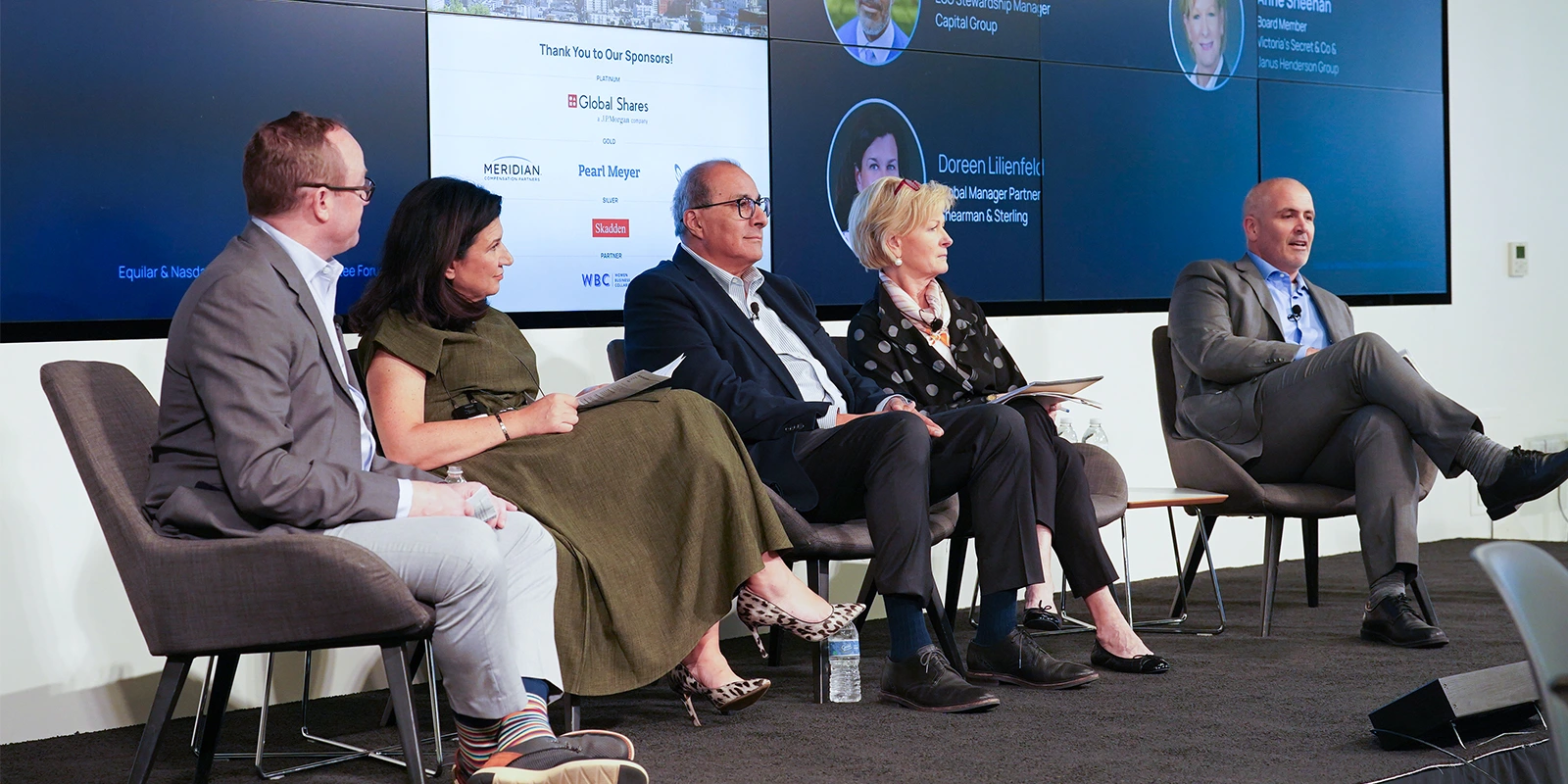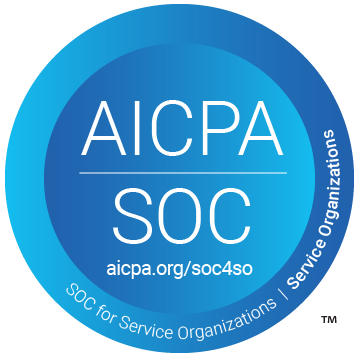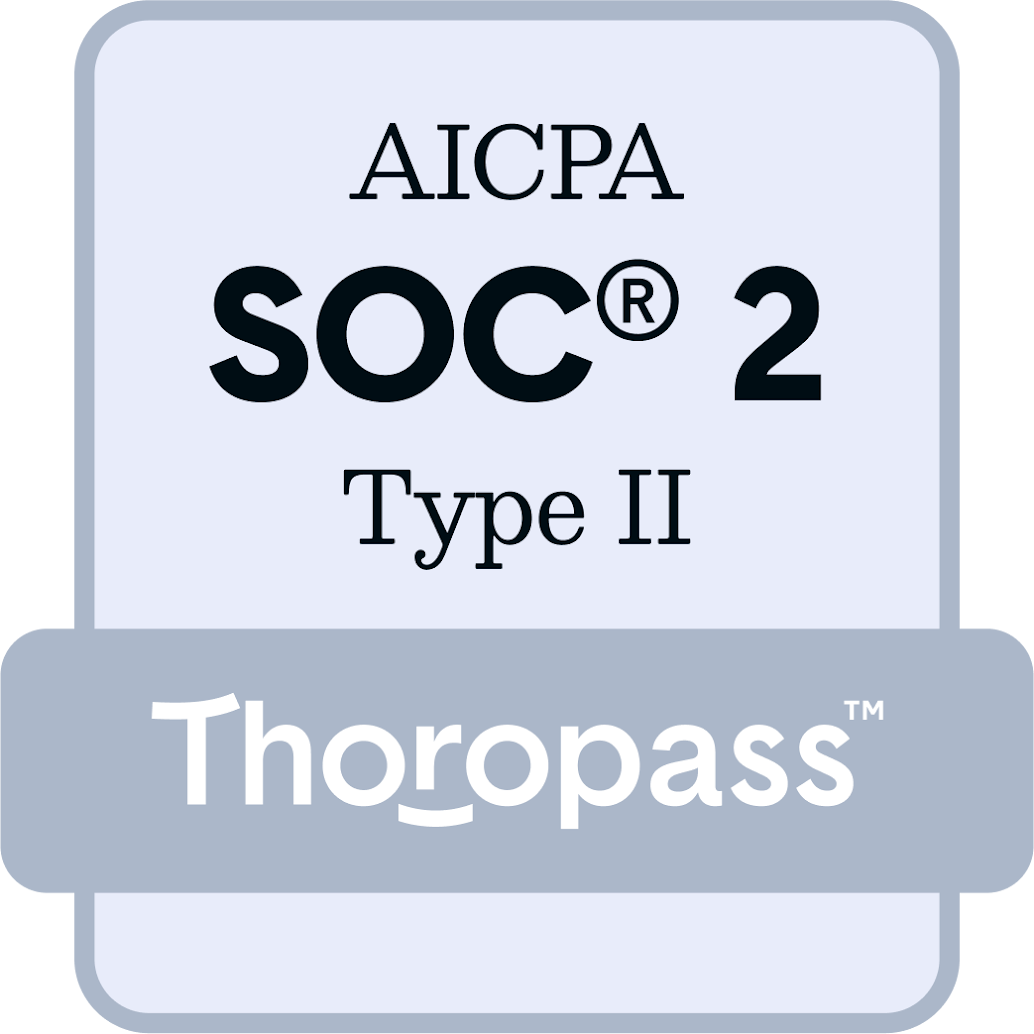Pay Versus Performance: The Future of Data and Disclosure for Investors
Blog Series: Recapping the Compensation Committee Forum
February 14, 2024
Joyce Chen

Equilar and Nasdaq recently partnered up and hosted a Compensation Committee Forum this past fall. The afternoon featured several panels of experts covering key topics on the compensation committee’s agenda. One of the panels highlighted insights on Pay Versus Performance and how investors will use this information moving forward. Moderated by Phil Neiswender, Head of Board Advisory, Americas and Asia Pacific Region at Nasdaq, the panel included Stuart Hall, ESG Stewardship Manager at Capital Group, Doreen Lilienfeld, Global Managing Partner at Sherman and Sterling, Lou Miramontes, Board Member at Lithia Motors and Opportune Financial Corporation, and Anne Sheehan, Board Member at Victoria's Secret and Janice Henderson Group. Below is a condensed summary of the panel discussion.
Phil Neiswender: Do you think that the SEC's new Pay Versus Performance disclosure requirements are going to provide an effective means to evaluate alignment?
Stuart Hall: Despite market volatility, companies are developing infrastructure for disclosure. Crafting a narrative aligning with the CD&A, illustrating the link between value, company performance and shareholder value creation will enhance disclosures' usefulness.
Doreen Lilienfeld: Longitudinal disclosure hasn't spurred significant shareholder engagement in pay for performance. Proxy advisory firms and institutional investors maintain pre-existing measurement methods, with around 80% of companies aligning performance and pay. The initial impact seems underwhelming after a 13-year wait.
Lou Miramontes: What it has done is brought more focus on alignment of identifying a strategy and goals that leadership and the CEO can try to achieve and how you compensate that. I'm not sure yet in terms of how it will change behavior inside the boardroom. It did raise the bar in terms of ensuring that our programs and our disclosures indeed reflect what the CEO and executive team and other executives and non-leader teams are doing, and how that ties up with company performance and shareholder return.
Anne Sheehan: Disclosure's relevance and investor use will be clarified over time. Proxy advisors may take years to align views, potentially leading to negative recommendations. Realizable pay's focus is more pertinent than summary tables, limiting cherry-picking. In the first year, it's more meaningful than the pay ratio. Companies may have done the minimum for compliance, awaiting further developments. Alignment is expected to improve but may take a couple of years.
Neiswender: Was there anything from this first year that you learned that you're going to take into the next year of reporting that is key learning?
Miramontes: The key learning from the first year is the importance of understanding and effectively communicating the impact of share price volatility on compensation metrics. This insight will guide future disclosures for consistency, credibility and to avoid misinterpretation.
Neiswender: How do you anticipate proxy advisory firms will use this data a couple of years from now?
Hall: Proxy advisors use client data to shape recommendations, influencing investors' votes. Despite not impacting the company's vote, their research is crucial for index investors. Challenges include the opaque decision-making process. Expectations involve developing new alignment measurement methodologies over a three-year evaluation period for enhanced reporting.
Miramontes: It's going to take a couple of years for them to figure out how they're going to use them in their models because the more datasets they have, the more data they will have. I think they will focus like they do on something that may be a real outlier, the graph, the pay went up and the performance went down.
Neiswender: Are there any broad brush strokes that you would paint for folks from that SEC guidance that people would want to be thinking about?
Lilienfeld: Your disclosure is an opportunity here to make sure that the message behind the numbers is being heard. Going back to what you did last year and starting from that point, but then developing it, is going to be really important in terms of messaging, particularly if you're a company that's having other issues this year with the macroeconomy and the different currents that are going on.
Sheehan: After the first year, as I say, everybody didn't go a lot beyond that in terms of how they were going to explain. Hopefully, it won't go the way of pay for performance, or pay ratio. I think it will be a more meaningful piece of data that investors and companies can use as they go through and set their compensation and philosophy going forward.
Hall: I'm a firm believer that, over time, governance drives strong performance, checks and balances. Good governance, good committee members, good directors and good independence provide shareholder value, and those are the things that we look for. Investors will begin to challenge you to own the narrative, get rid of the boilerplate, tell your story, and own the performance, own the decisions that the compensation committee members make.
Watch the full panel session on demand. To view key takeaways from the Forum, download our event highlights.
Contact

Joyce Chen
Associate Editor at Equilar
Joyce Chen, Associate Editor at Equilar, authored this post. Please contact Amit Batish, Senior Director, Content & Communications, at abatish@equilar.com for more information on Equilar events, research and analysis.
 Roles
Roles












